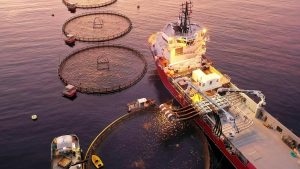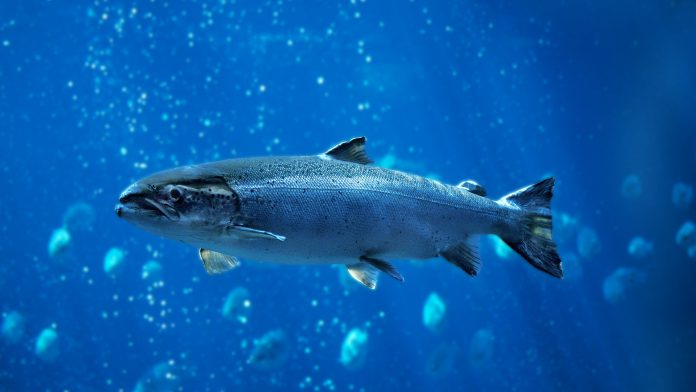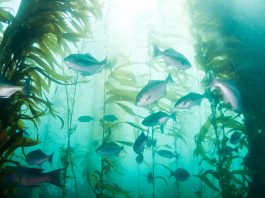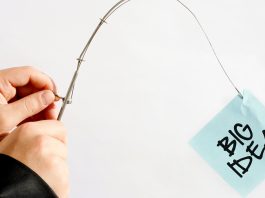In the ever-changing world of fish welfare Flatsetsund Engineering are a constant, pioneering the technology needed to eliminate sea lice and save the salmon industry.
The aquaculture industry is held to a high standard, driven by the ever-growing commercial consumption of fish. Due to this demand, the industry sets and maintains high production and performance goals. However, in order to fulfill commercial demand and maintain the viability of the industry aquaculture professionals must work to realise its potential and strive for an increased sustainable production of salmon at sea. To fulfill this demand, several key dilemmas facing the industry need to be solved, such as sea lice treatment and fish welfare which require immediate practical solutions to ensure the long-term profitability of seafood production.
Norway has the world’s strictest limits for salmon lice in aquaculture, but these restrictions mean that the industry is struggling to stay within the limits that have been set whilst still satisfying global demand. Previously, medical treatment helped keep the spread of sea lice under control, but the sea lice gradually developed a resistance to the drugs being used, severely reducing their efficiency and leading to a resurgence in sea lice within salmon farming. In light of this, the industry has had to adapt and develop alternative methods, such as freshwater treatments (in which the change in salinity kills the sea lice), water temperature treatment (in which the lower temperature causes the lice to become dormant and detach from the fish), and various other forms of mechanical removal of lice. However, these methods are not without their challenges, with several treatment methods commonly causing injuries and stress to the treated fish, leading in turn to increased mortality rates. These challenges have led to an uptake of preventative measures, such as cleaner fish and lice skirts, but these methods are not without their faults and can incur a significant extra cost.
Fish welfare must be the main objective
Flatsetsund (FLS) have specialised in aquacultural delousing for more than ten years and have gained considerable experience within the practicalities and realities of the industry. Salmon can be fragile, but they are a cornerstone of the global fishing industry. Therefore, our focus as we explore how innovation can breathe new life into aquaculture has always centered on the welfare of the fish.

The FLS CALIGUS is a mechanical delouser that flushes the fish with seawater at a maintained natural temperature. It uses a siphon which pulls the fish from their cage and flushes them, washing the lice off before delivering them back to the cage at the same level. The vacuum-assisted pipe allows the fish to be collected, cleaned, and deposited in a natural way, maintaining consistent water levels and minimising the distress experienced by the fish.

The pumping pressure on the ejector is only 0.35-0.45 bar, which maintains a natural flow of water and avoids unnecessary disruption to the surrounding waters. In line with the unique design of the pipeline, the flushers also operate at minimal pressure, in stark comparison to all other mechanical delouser solutions that are currently available. The FLS CALIGUS delouser maintains a mortality rate as low as 0.1%, and a delousing effect of more than 95%. Even though the mortality rates are low, we are continuously working to improve these through further innovative developments.
The fish welfare toolbox
Fish farmers need to develop a ‘toolbox’, a set of skills, knowledge, and equipment that enables them to delouse fish whilst keeping fish welfare and working efficiency at the centre of all operations. Fish welfare has always been the main focus for us at FLS when developing solutions for the aquaculture industry. We know that access to accurate testing and significant experience gained through years of industry work are essential for enabling further innovation that will truly benefit the industry. Every delouser system has its strengths and weaknesses, and many of them have the potential to improve, but we cannot just accept this fact; we must continually work towards more efficient and fish-friendly solutions to the problems the industry faces.
Development and data
The development of new and improved forms of treatment is dependent on the availability of relevant and accurate data that can be analysed in order to inform emerging solutions. To learn more about the onsite impact of both the lice and the delousing equipment it is essential to get regular feedback from functioning field operations. Where possible, we collect systematic data from all operations who employ our technologies. This enables us to know as much as possible about conditions before, during, and after the delousing process, highlighting any issues that may have arisen and giving us accurate data about the success rates of the operation.
It is important that the conditions for testing and obtaining data from delouser processes are closely regulated and monitored and that these conditions are set by the Food Safety Authority. This is sensitive data for the fish farmers and the service companies preforming the operation, so the ownership of the data is with the Food Safety Authority who must also ensure that the data and company details are anonymised. This information should then be made available to the wider industry so that it can be used to drive innovation led by companies involved in research and development working towards a more sustainable and ethical delousing process in which fish welfare takes centre stage.
The political challenge
We continuously champion the importance of keeping fish welfare central to aquacultural practices. However, in order to succeed we depend on political decisions based on values and clear priorities which set fair and reasonable conditions for an industry which is growing rapidly. The Food Safety Authority must work to consistently implement new, accurate, accessible guidelines and resources in order to keep up with the continually changing landscape of commercial aquaculture whilst maintaining its focus on fish welfare.
Please note, this article will also appear in the seventh edition of our quarterly publication.









